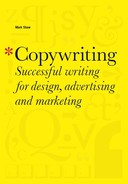Steve Wexler runs one of the most successful direct-marketing copywriting firms in the US. He has been writing copy for 20 years, initially for catalogs, and now specializes in writing for direct marketing. He employs 11 copywriters in his creative studio, which also includes two sizable design teams, and believes in the power of closely linking words and imagery. He tells us how his studio improved upon the results of a successful direct mailer.

generate improved response from a successful mailer
MemoMind Pharma have successfully promoted their neuropeptides memory pill by mailing a 12-page supplement with articles on memory enhancement to their customer base. The control mailer that had been proven to deliver the best responses was a 11 x 8½ in (27.9 x 21.6 cm) “magalog” (a cross between a magazine and a product catalog).
We test lots of formats using alternative headlines and measuring responses. The challenge is always to improve the control; this is hardest of all when it was your own work! We always start by taking
a thorough creative brief. After this, I outline the project, write some initial headers and sub-headers, and art direct the layout and structure. The writers and designers then fill in the pieces.
The cover, which is prime real estate, was loaded with promises (which every magazine from Cosmopolitan to The Enquirer uses heavily) about the benefits of memory enhancement, so we looked at the format, and decided to test different sizes, which let us set copy in larger point sizes.
The Approach:
the benefits of different formats
When you’re creating direct marketing, leave your ego at the door – our work is not going to be hanging in the Louvre. Remember that the design has to sell the message. Every element of direct-marketing design should push readers to the end sell, so the designer should read the copy fully and understand exactly what it is that they are selling. Some get this and some don’t. (If you’re a designer and you get this, you get a much larger salary!)
It is important to develop the copy and design solutions together. If direct marketing were a sales representative, graphic design would be his or her suit and style, and copy would be his or her sales messages. It is often underappreciated that design has to create something that sends a message across visually. Graphic design and conceptual images can overshadow a message: it can be more interesting to look at them and ignore the copy.
It is all about presenting a compelling concept. It’s important to work with images that will inspire your end prospect. I will sometimes visit a picture library and search for a compelling picture that relates to the message in a brief, and write copy around it. It is very difficult to do this the other way around. You have to tailor the message to the audience, and make it clear what’s in it for them.
The memory enhancement supplement is designed to look and feel like a quality magazine.
It has news-stand quality and a high perceived value (it included the price tag of US$3.95/CAN$4.50 in the top right-hand corner). It includes a range of different editorial angles, each one leaning toward the proven benefits of the memory pill, for example looking in detail at its ingredients or showcasing a series of testimonials about its effectiveness.
The copy focused on believability, legitimacy, and sales points. Believability came as much from design treatment as copy, which included powerful testimonials from credible people explaining how it worked for them, such as “Wow! What a difference MemoProve has made. I am more alert than I’ve ever been. It’s almost hard for me to realize how ‘mentally slow’ I had been for so long.” The credentials of clinical physicians and findings of medical studies give the messages legitimacy: “Clinical trials on MemoProve stunned researchers when results surfaced in not the usual three to six month time frame, but in 30 days!” Sales points give readers some of the best promises they’ll get. As well as offering free samples, the copy promises “to reverse 10 years of age-related memory loss.”
We set the mailer in different sizes, the largest being a tabloid. Each had the same copy and design; in the larger formats everything was proportionally bigger. For the tabloid we had to create an extra four pages as it had to be a minimum of 16 pages.
The Result:
the larger copy sizes generate the best response
The tabloid format, with its increased font size and larger images, delivered even better results than the control mailer, making the most expensive format the one that delivered the best return on investment.
We mail-tested with lower numbers than the usual mass mailing; the tabloid won significantly. When it was rolled out to the full list there was a huge increase in response, so it became the control mailer. There aren’t usually many quality brochures in the mail because they are expensive, so this is a real point of difference. When mail came, the quality-printed tabloid became the wrap people used to carry the rest of their mail in.
The bigger type made the copy easier to read for our audience, who are in the older age range, and removed anything that might stop them in their tracks when reading the messages. Whatever you do, don’t let anything stop your readers in their tracks – let the flow of the messages continue and you’ll get the best responses.
